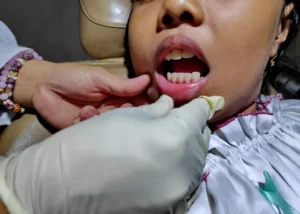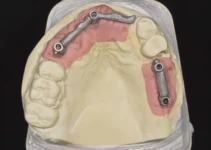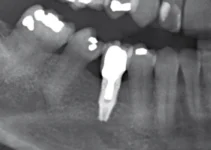Dry mouth, or xerostomia, is a common symptom for patients suffering from Sjögren’s Syndrome, impacting daily comfort and oral health. Effective management of dry mouth involves a combination of lifestyle adjustments, medication, and specialized treatments. Hydration plays a critical role; increasing water intake can alleviate some discomfort. Moreover, saliva substitutes and specific medications may also be prescribed to enhance moisture and relieve symptoms. Regular dental visits are essential, as good oral hygiene can prevent further complications such as tooth decay or gum disease. Understanding these strategies can significantly improve the quality of life for those affected by this condition.
Understanding Sjögren’s Syndrome
Sjögren’s Syndrome is a complex and chronic autoimmune disease that primarily affects the body’s moisture-producing glands. This condition can lead to a range of complications, particularly concerning oral health, due to the vital role of saliva in maintaining oral hygiene. In this article, we will delve into the intricacies of Sjögren’s Syndrome, its symptoms, diagnosis, and its specific impact on salivary glands.
Understanding the nuances of Sjögren’s Syndrome is crucial for both patients and healthcare providers. Being well-informed can significantly aid in the timely diagnosis and management of this condition, thereby enhancing the quality of life for those affected.
What is Sjögren’s Syndrome?
Sjögren’s Syndrome is an autoimmune disorder wherein the body’s immune system mistakenly attacks its own moisture-producing glands. This includes not just the salivary and tear glands, but potentially other parts of the body like joints, thyroid, kidneys, liver, lungs, skin, and nerves. It can occur alone, known as primary Sjögren’s Syndrome, or in conjunction with other autoimmune diseases, referred to as secondary Sjögren’s Syndrome.
The exact cause of Sjögren’s Syndrome remains unknown; however, it is believed to involve a combination of genetic, environmental, and possibly hormonal factors. Research indicates that certain genes may increase susceptibility, but an environmental trigger, such as a viral or bacterial infection, might be necessary to activate the disease in genetically predisposed individuals.
Symptoms and Diagnosis
The hallmark symptoms of Sjögren’s Syndrome include dry mouth (xerostomia) and dry eyes (keratoconjunctivitis sicca). These symptoms result from decreased production of saliva and tears, respectively. Additionally, patients might experience a dry throat, dry skin, joint pain, swelling, and fatigue. In some cases, the condition can also cause systemic issues such as inflammation of blood vessels (vasculitis), lung problems, or lymphoma. Diagnosis typically involves a combination of clinical evaluation, laboratory tests, and specific diagnostic procedures. The American-European Consensus Group’s criteria for Sjögren’s Syndrome diagnosis include:
- Ocular symptoms
- Oral symptoms
- Ocular signs (such as Schirmer’s test)
- Histopathology (minor salivary gland biopsy)
- Salivary gland involvement (objective tests like sialometry)
- Autoantibodies (anti-Ro/SS-A and anti-La/SS-B)
Meeting four of these six criteria, including at least one histopathological or objective test, leads to a diagnosis of Sjögren’s Syndrome.
Impact on Salivary Glands
The reduction or complete cessation of saliva production due to Sjögren’s Syndrome can have a profound impact on oral health. Saliva plays a critical role in maintaining oral hygiene by neutralizing acids produced by bacteria, removing food particles, and providing disease-fighting substances throughout the mouth. When saliva is lacking, the risk of dental caries, oral infections like candidiasis, and difficulties in swallowing and speaking increases significantly.
Patients with Sjögren’s Syndrome often report a constant feeling of dryness or a burning sensation in their mouth, difficulty in speaking or swallowing, and a reduced ability to taste. This is due to the essential role of saliva in the mechanical and chemical processes involved in these activities. The condition can also lead to an increased incidence of gum disease and tooth decay.
Management of these symptoms involves both pharmacological and non-pharmacological approaches. These may include:
- Use of saliva substitutes or stimulants
- Regular dental check-ups
- Good oral hygiene practices
- Hydration and avoiding substances that can exacerbate dryness, such as tobacco and alcohol
Understanding Sjögren’s Syndrome and its impact on oral health underscores the importance of early diagnosis and comprehensive management. By staying informed, patients and healthcare providers can work together to minimize complications and enhance quality of life. Explore our other articles to learn more about managing autoimmune diseases and maintaining optimal oral health.
Effective Strategies to Manage Dry Mouth
Dry mouth, also known as xerostomia, is a condition where the salivary glands in your mouth don’t produce enough saliva to keep your mouth wet. It’s a common issue, particularly among older adults, and can arise due to various reasons including medications, certain medical conditions, and lifestyle habits. Understanding and implementing effective strategies to manage dry mouth can significantly improve one’s quality of life.
One major consequence of dry mouth is that it can actually exacerbate dental issues, as saliva plays a crucial role in neutralizing acids produced by bacteria, limiting bacterial growth, and washing away food particles. Therefore, maintaining adequate moisture levels in the mouth is not only important for comfort but also for oral health. This article will explore several proven strategies for managing dry mouth, categorized into hydration techniques, saliva substitutes, and dietary adjustments.
Hydration Techniques
Staying adequately hydrated is one of the simplest and most effective ways to manage dry mouth. Drinking water frequently throughout the day helps maintain moisture levels in the mouth. It’s recommended to drink small sips of water regularly rather than consuming large amounts all at once.
Another effective hydration technique involves using a humidifier at night. A humidifier adds moisture to the air, which can be particularly beneficial if you breathe through your mouth or sleep in an environment with low humidity. Ensuring that your living environment is not too dry can make a significant difference in managing symptoms of dry mouth.
Avoiding beverages that can dehydrate, such as caffeinated drinks and alcohol, is also crucial. These substances can worsen dry mouth by reducing saliva production. Instead, opt for water, herbal teas, and other hydrating beverages.
Saliva Substitutes
Saliva substitutes and stimulants are over-the-counter products designed to mimic the natural saliva in your mouth. They come in various forms such as sprays, lozenges, and mouth rinses. These products often contain carboxymethylcellulose or hydroxyethyl cellulose, which help to retain moisture and provide relief from the discomfort of dry mouth.
Prescription medications that stimulate saliva production also exist. For instance, pilocarpine and cevimeline are drugs prescribed to increase saliva flow. These should be used under professional supervision, particularly if your dry mouth is severe and doesn’t respond to other treatments.
Additionally, chewing sugar-free gum or sucking on sugar-free candies can help stimulate saliva production. The act of chewing or sucking activates the salivary glands, providing a temporary but effective method for increasing saliva flow.
Dietary Adjustments
Making certain dietary adjustments can also help manage dry mouth effectively. Eating foods that are moist and easy to chew can reduce discomfort. Avoiding dry, spicy, or salty foods can also prevent the exacerbation of symptoms.
Incorporate foods rich in water content, such as cucumbers, watermelon, and oranges, into your diet to help keep your mouth hydrated. These foods not only provide essential hydration but also contain vitamins and minerals beneficial for overall health.
Limiting sugary and acidic foods is crucial, as these can contribute to dental decay, especially when saliva flow is low. Opt for snacks like cheese, yogurt, and leafy greens that are both nutritious and less likely to harm oral health. By following these dietary adjustments, you can maintain better overall health while specifically targeting the symptoms of dry mouth.
Managing dry mouth is vital for both comfort and oral health. By implementing hydration techniques, using saliva substitutes, and making dietary adjustments, you can effectively alleviate the symptoms. For more in-depth information about oral health and other dental issues, be sure to read our other articles.
Pharmacological Treatments
When it comes to dental implantology and bone regeneration, the strategic use of pharmacological treatments plays a crucial role in ensuring successful outcomes. Pharmacological agents can be utilized to manage pain, reduce inflammation, and prevent infections, all of which are essential for the longevity and integration of dental implants. Antibiotics are often prescribed to prevent postoperative infections, especially in patients with underlying health issues or those undergoing extensive implant procedures. The choice of antibiotic, its dosage, and the duration of the treatment should be tailored to the individual patient’s needs, taking into consideration factors such as allergy history and dental complexity.
Another significant aspect of pharmacological treatments in implantology involves the use of anti-inflammatory medications. Both non-steroidal anti-inflammatory drugs (NSAIDs) and corticosteroids are commonly prescribed to manage postoperative swelling and discomfort. NSAIDs, such as ibuprofen, help in reducing inflammation and providing pain relief. On the other hand, corticosteroids, although not commonly used due to their potential systemic side effects, can be beneficial in cases of severe inflammation. It is essential to balance the benefits of inflammation control with the risks associated with long-term use of these medications.
In addition to antibiotics and anti-inflammatory agents, bone metabolism regulators such as bisphosphonates and teriparatide can be employed to enhance bone regeneration. Bisphosphonates work by inhibiting osteoclast-mediated bone resorption, thus promoting bone density and stability. Teriparatide, a recombinant form of parathyroid hormone, stimulates new bone formation by enhancing osteoblast activity. These agents are particularly useful in patients with compromised bone health, such as those with osteoporosis. However, their use must be carefully monitored due to potential side effects, including osteonecrosis of the jaw, particularly with bisphosphonates.
In summary, pharmacological treatments in dental implantology are multifaceted and must be personalized for each patient. By leveraging the appropriate medications, dental professionals can significantly enhance the success rates of implants and the quality of bone regeneration. For those interested in learning more about specific pharmacological agents and their applications in dental procedures, we encourage you to explore our other articles on this topic.
Long-term Care and Monitoring
Once dental implants are placed, the journey doesn’t end there. Ensuring that they remain in optimal condition requires constant vigilance and regular maintenance. Long-term care and monitoring are essential to safeguard the success of dental implants and the overall health of the patient.
Comprehensive aftercare, including consistent monitoring and professional support, is crucial in detecting and addressing potential issues before they escalate. This continuous approach promotes the longevity of dental implants and enhances the patient’s quality of life.
Regular Dental Check-ups
Frequent dental check-ups are fundamental to the lasting success of dental implants. These appointments allow for professional cleaning, which helps prevent the build-up of plaque and calculus around the implant site. Regular inspections by a dental professional can identify early signs of complications such as peri-implantitis, a condition that can lead to implant failure if left untreated.
During these visits, dentists can assess the condition of the implant and surrounding tissues, providing necessary treatments or adjustments. They can detect signs of wear and tear on the prosthetic components and ensure the surrounding bone remains healthy and supportive.
Regular check-ups also offer an opportunity for patients to discuss any discomfort or issues they may be experiencing. This proactive approach helps maintain the integrity of the dental implants and the overall health of the oral cavity.
Managing Co-existing Conditions
Patients with dental implants may have co-existing medical conditions that can affect the health of their implants. Conditions such as diabetes, osteoporosis, and periodontal disease require specialized management to ensure they do not adversely impact the implants. For instance, uncontrolled diabetes can impair healing and increase the risk of infection around the implant site.
Effective communication between the dental care provider and the patient’s primary care physician is essential. This collaboration ensures a comprehensive treatment plan that takes all health factors into account. Managing these conditions well can significantly reduce complications and enhance the success rate of dental implants.
Patients must adhere to their prescribed medical treatments and maintain a healthy lifestyle. Regular monitoring and adjustments to their medical care plans are vital to provide a supportive environment for dental implants.
Patient Education and Support
Educating patients about proper oral hygiene practices and the importance of regular maintenance is critical for the success of dental implants. Patients must understand how to care for their implants and recognize early signs of potential issues. Proper brushing and flossing techniques tailored to their specific needs should be demonstrated and reinforced during dental visits.
Support networks, including dental implant support groups and educational resources, can provide patients with the information and encouragement they need to maintain their implants. Having access to a community of individuals who share similar experiences can be incredibly empowering and reassuring.
- Emphasizing the importance of a balanced diet
- Avoiding habits detrimental to oral health, such as smoking
- Regularly updating their dental provider about any changes in their health status
These educational efforts help patients take an active role in their oral health, enhancing the longevity and success of their dental implants.
To continue learning about the best practices for maintaining dental health, consider exploring our other articles that delve deeper into specific aspects of oral care and dental technology advancements.
FAQs on Managing Dry Mouth Due to Sjögren’s Syndrome
If you or a loved one has been diagnosed with Sjögren’s Syndrome, you likely have questions about managing its symptoms, especially dry mouth. Here are some common inquiries with expert answers that can help ease this condition.
What are the best practices for managing dry mouth associated with Sjögren’s Syndrome?
Staying hydrated is crucial, so drink plenty of water throughout the day. Sucking on ice chips, using sugar-free candies or gum to stimulate saliva, and avoiding mouth-drying substances like caffeine and alcohol are other effective strategies. Additionally, certain medications can be prescribed by healthcare professionals to help stimulate saliva production. Practicing good oral hygiene and regular visits to your dentist can also prevent severe complications that may result from prolonged dry mouth.

My name is Salman Kapa, a 73-year-old expert in bone regeneration and dental implantology. With decades of experience in the field, I am dedicated to advancing our understanding of oral health and hygiene. Through my research and writing, I aim to contribute to the development of innovative solutions in dental care.




